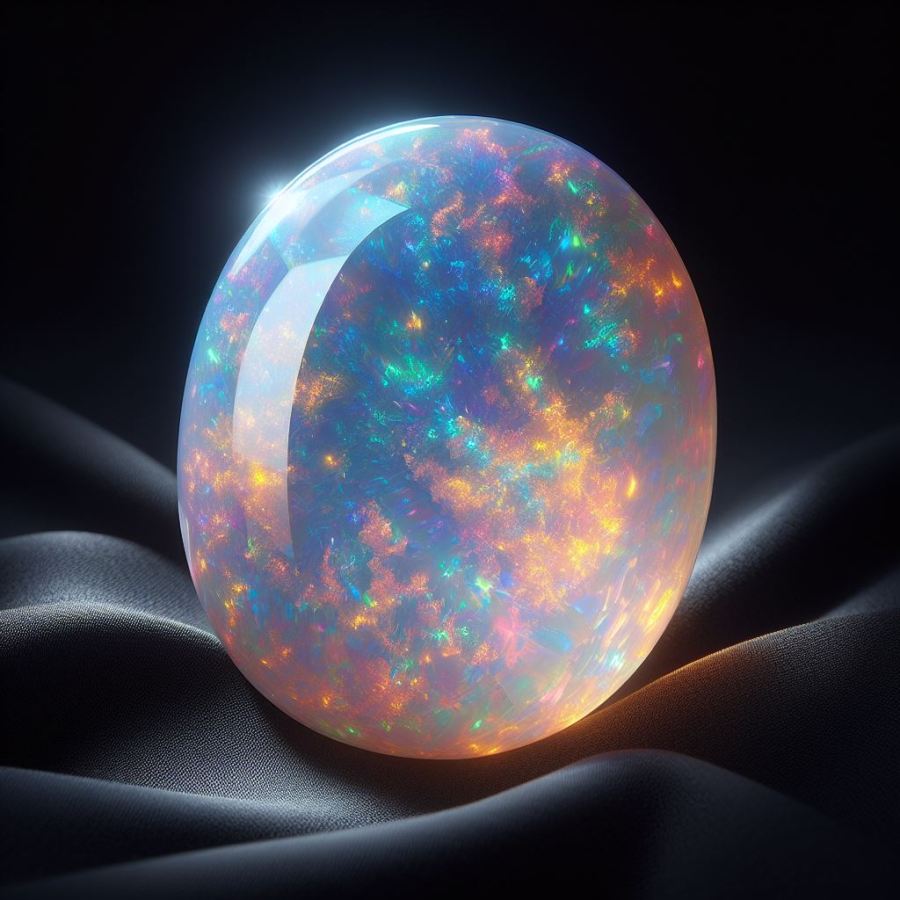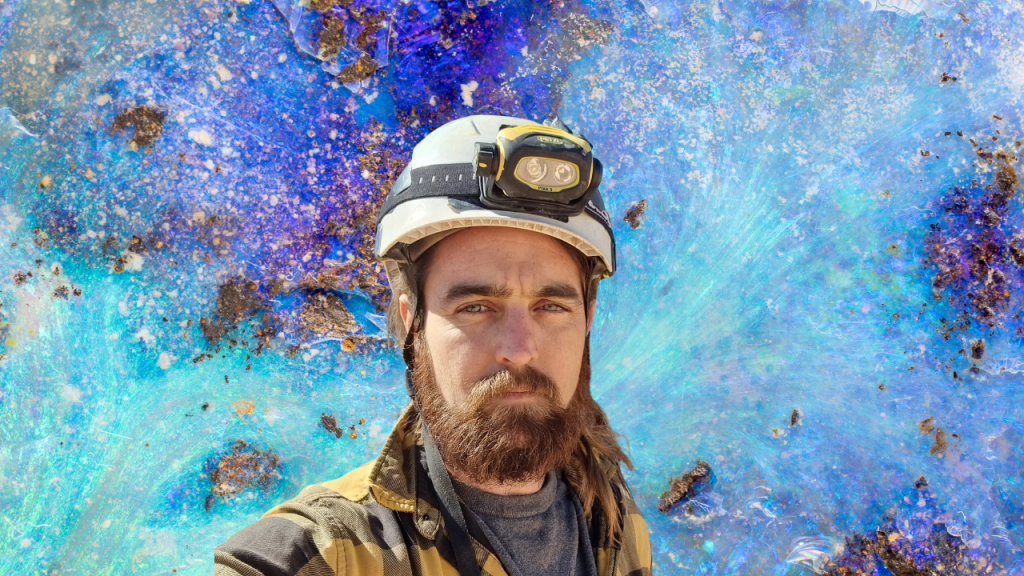Opal NFTs: Free-spirited eco-pals Josiah Kotzur and Lisa van Heijningen have spent the Aussie winter 30 feet underground trawling through the mines of Yowah, Queensland in search of an illustrious, colourful gemstone called opal. And, it might be because of them that the term “Yowah opal mine for sale” is currently trending.
Kotzur, born and raised in Yowah, first began the mining operation in 2021, while Dutch-Spanish van Heijningen joined the adventure earlier this year following a backpacking expedition through the Outback. The pair of Digi Diggers have created a sustainable living on the off-grid mine site, inhabiting a bus and garnering the necessities of water and electricity via solar power.
Ethical Outback opal NFTs
Alongside this, the mining operation is entirely renewable and ethical with the intent of “reduc[ing] the environmental footprint of mineral-based product life cycles”.
With a winter population estimated to be around 100 residents, Yowah is a tiny town with a “vibrant, creative spirit”, say Kotzur and van Heijningen. The pair are now keen on expanding their impact beyond the realm of the rocks and deserts to the germinating digital ecosystem.
We are building a platform called Metarock that will allow us to create a virtual online shop where we can showcase 3D minted images of our opals that everyone around the whole world can see, and buy.
Josiah Kotzur and Lisa van Heijningen via Instagram
These 3D minted images will serve as digital duplicates of the real-world opals and be represented on the blockchain as NFTs.
In comparison to traditional online assets such as those available for purchase on the likes of Amazon and eBay, utilisation of the blockchain provides the benefit of an immutable ledger of transactions. Furthermore, it can be done in an environmentally sustainable manner on layer two networks such as Polygon, adding to the cultural renaissance of collectability, among other use cases.
By leveraging blockchain technology, users of Metarock have the opportunity to engage in game theory mechanics, whereby owners of digital opals in the Digi Diggers collection have the choice of burning their asset in exchange for the physical counterpart.
Yowah opal mine for sale
As interest in both opals and in NFT grows again after a very cold crypto inter, the term “Yowah opal mine for sale” has started trending on the interwebs. Opals, it is claimed, are actually more rare than diamonds, and are finite, so their prices have been going up.
Are people looking to mine opals? And will they want to record the their big finds as NFTs? It seems that many precious gem dealers are already putting their big chunks of shiny rock on the blockchain.
With Donald Trump flogging his new set of NFTs, they great hope for NFT lovers is that they will come out of hibernation and be worth once again the extravagant prices they once were.
IRL tokenised assets
NFTs have become synonymous with the tokenisation of artwork, but this is merely its debut iteration – or its guinea pig medium one could say. From sports collectibles to movie reels and music, NFTs are extending their tentacles far and wide, bridging the gap between the physical and the digital worlds.
Damien Hurst was one of the first NFT artists to embark on the revolutionary endeavour of physical and digital forging with his widely acclaimed collection The Currency.
Owners of one of the 10,000 The Currency NFTs could choose to either retain their digital version, or burn it in exchange for a physical copy. Following the deadline, it was determined that 5,149 owners chose the physical route, while 4,851 selected to keep the NFT. These results demonstrate that the jury is still out in terms of which will remain more valuable in the long run — digital NFTs or their physical equivalent. However, it did also showcase the potential for a symbiotic relationship between the mediums moving forward.
Tokenisation extends well beyond art into the full spectrum of physical items from real estate and luxury vehicles to Amazonian trees. In theory, anything and everything can be digitally traced, stored, categorised and traded using blockchain technology.
At its core, tokenisation is about democratising access to asset classes that were once the domain of the uber-rich. Today we have numerous examples of companies looking to make a social impact by leveraging blockchain technology to open up ownership to wider audiences.

Vs real estate
Take real estate for example, which has two persistent challenges: accessibility and liquidity. As property prices have outrun wage growth in many developed markets, real estate ownership has become an increasingly distant dream. However, companies like Hero X aim to lower the barriers to entry by tokenising property. What’s more, those tokens can easily be traded at a greatly reduced cost, unlike physical property which isn’t liquid and has significant transaction costs.
Another area is the art industry, which through companies like Masterworks, enables ordinary people without millions of dollars lying around to get exposure to the works of Monet, Da Vinci and Banksy at a fraction of the cost. Into your wine but can’t afford the eye-watering price tag? In that case, you can buy a fraction of an award-winning 1952 Bordeaux.
As noted in an OECD report, there are numerous benefits associated with tokenisation, including:
- Disintermediation of third parties;
- Transparency;
- Reduced barriers to entry;
- Increased liquidity;
- Faster and more cost effective tradability; and
- Enabling pools of capital to reach parts of financial markets previously reserved for large investors.
The bottomline is that if it’s a physical asset with value, it can be tokenised.
As the digital and physical realms become increasingly blurred, expect tokenisation to play a role to a lesser or greater extent. Global macro investor Raoul Pal outlined the bull case in a fiery tweet last year.



